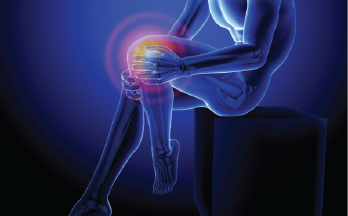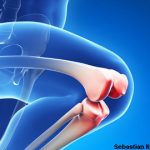
sebos / shutterstock.com
When a young patient arrives at a clinic complaining of knee pain with clicking or popping, a meniscal tear is often the culprit.
“In young [people], there’s a pretty classic presentation of meniscal tear, with clicking and other mechanical symptoms, because the tear rubs up against different tissues,” says Jeffrey Katz, MD, MSc, a rheumatologist at Brigham and Women’s Hospital in Boston and professor of medicine and orthopedic surgery at Harvard University Medical School in Boston. “It turns out, that’s not really the pathology we see in older people who have a meniscal tear.”
This is, in part, what makes a diagnosis of meniscal tear in patients 45 and older difficult and what led Dr. Katz and colleagues at Brigham and Women’s, Harvard Medical School and the Boston University School of Public Health to lead a study aimed at better diagnosing meniscal tears in older patients.1
The Study
In the cross-sectional study, published in April 2017 in Arthritis Care & Research, the researchers evaluated the clinical history, physical examination and radiographic findings (MRI) of 174 patients aged 45 and older with osteoarthritis who presented at two orthopedic clinics at Brigham and Women’s complaining of unilateral knee pain.
Among this population, the researchers identified an overall symptomatic meniscal tear prevalence of 24%, which the study authors say suggests that history, physical examination and radiographic findings can prove helpful in diagnosing symptomatic meniscal tears. They also developed an index based on regression analysis to help define the independent factors associated with symptomatic meniscal tear.
The mean age of patients recruited was 63 years, with a standard deviation of 9. More than two-thirds of the subjects were older than 60, and 40% were male. One-third had a body mass index greater than 30 and reported moderate-to-severe knee pain with functional limitation. Ninety-seven percent presented with an osteophyte on radiography.
The researchers asked the clinics’ experienced orthopedic surgeons, blinded to radiographic results, to rank their confidence that each patient’s symptoms were due to meniscal tear. Patients for whom the clinicians reported 70% or higher confidence in a symptomatic meniscal tear were defined as diagnosed.
“We gathered data on elements of clinical history and data on physical examination and compared that with physicians’ impressions of what diagnosis the patient had,” Dr. Katz explains. “Physicians told us how confident they were the symptoms were due to meniscal tear, and we related the two of them to determine how well a physical exam and history signals a predicted meniscal tear.”
The research team identified six findings independently associated with an expert clinician having greater than 70% confidence in a diagnosis of meniscal tear: localized pain, ability to fully bend the knee, pain duration of less than one year, lack of varus alignment, lack of pes planus and absence of joint space narrowing on radiographs.
From these findings, they generated a points-based index, assigning localized pain and the ability to fully bend the knee one point each, lack of varus alignment and lack of pes planus two points each, and pain duration of less than one year and lack of radiographic evidence of joint space narrowing four points each. Higher index scores were associated with an increasing likelihood an expert clinician had 70% or greater confidence of meniscal tear.
The researchers also identified a low-risk group of patients for whom the likelihood of meniscal tear measured just 3%, and a high-risk group for whom the risk measured 54%.
Additionally, they did not find statistically significant nor clinically meaningful associations between mechanical symptoms such as grinding, clicking, locking or the knee giving way, and physician confidence in a meniscal tear.
The findings were simultaneously predictable and surprising, says Dr. Katz, who is also the Clement B. Sledge and Thomas S. Thornhill chair in Orthopedic Surgery, director of the Orthopedic and Arthritis Center for Outcomes Research, and vice chair for Orthopedic Research at Brigham and Women’s.
Not at all surprising was an association between meniscal tear and patients who described their pain as localized to one part of the knee rather than diffuse. Dr. Katz says they were surprised to learn that an absence of findings typically associated with osteoarthritis, such as flat feet, malaligned knee and joint-space narrowing, was positively associated with symptomatic meniscal tear.
The results indicate MRI is not a reliable means for diagnosing meniscal tears, the study authors conclude. “MRI is an awfully good test in that it is sensitive. … The problem is it’s too sensitive,” Dr. Katz says. “Many people have a meniscal tear on MRI, but they are completely asymptomatic.”
For example, Dr. Katz says, “If I sat on Boston Common and I took MRIs of the knees of all the people in their 50s and 60s walking through, I would see tears in 30–40%, and all of them would be asymptomatic with just a few exceptions. It’s normal for people in the community to have things like meniscal tear, disc degeneration, rotator cuff partial tears, [etc., that] don’t cause symptoms.”
He recommends thinking twice about ordering an MRI for patients in this age group who have symptoms that may not be due to meniscal tears. The test won’t necessarily advance diagnosis for these patients and can mask the true etiology of their symptoms. Up to 80% of adults with knee osteoarthritis have imaging evidence of tears, but patients with osteoarthritis and meniscal tear do not differ in the severity of their symptoms from those with osteoarthritis and no tear.
A New Diagnostic Tool
Without a gold standard for diagnosing symptomatic meniscal tears, Dr. Katz says an expert clinician’s opinion is the best approach. He hopes practitioners will adopt the study’s index as a tool for evaluating patients who present to the office with knee pain.
“I hope rheumatologists find it useful—that’s why it’s published in an arthritis journal,” he says.
The study authors note that surgeons perform more than 500,000 arthroscopic partial meniscectomies each year in the U.S., but there are conflicting data in randomized controlled trials regarding whether surgical therapy among patients with degenerative (nontraumatic) meniscal tears actually helps. Making the right diagnosis remains critical.
Today, Dr. Katz and his research team are analyzing surgical trial data and comparing them with nonsurgical therapies for meniscal tears. “We are aware that in this study and others, it’s challenging to know who exactly ought to be included in such a trial because it’s a difficult diagnosis to make.”
Kelly April Tyrrell writes about health, science and health policy. She lives in Madison, Wis.
Reference
- Katz JN, Smith SR, Yang HY, et al. Value of history, physical examination and radiographic findings in the diagnosis of symptomatic meniscal tear among middle-aged subjects with knee pain. Arthritis Care Res (Hoboken). 2017 Apr;69(4):484–490.


